After briefly expounding some of vr's thoughts (the students who haven't seen and are interested and the author's previous article, "Talking about VR's Problems and Suggestions"), I have always wanted to learn from AR in recent years. Thinking and writing into the text and sharing with you, but have been unable to find a good entry point, thinking for a long time, I think it is more appropriate to take the technical flow route, so I sorted out the information of the relatively mature AR products, and analyzed them one by one. Can throw bricks to attract jade. This article selects a domestic AR glasses product, the manufacturer will not say, the following begins to enter the topic:
HiAR Glasses
First, the hardware
1, cpu:
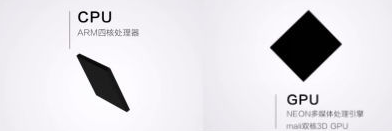
Since the official only published the quad-core structure of the cpu, the gpu is the dual-core structure of Mali. The author estimates that the MTK6732 of MediaTek should be selected. [Parameters are: 4-core A53 CPU, L2 Cache is 512k, integrated gpu is ARM MALI-T760 MP2 graphics. The operating frequency of the processor is 500MHz. The overall performance should be similar to that of Qualcomm's Opteron 600. If the guess is established, the HiAR Glasses computing power is slightly weaker, and the AR display is sufficient. The device also needs to pass the depth sensor. To achieve interactive functions, the computing power provided by this cpu is a bit thin. (Of course, the author does not rule out the use of co-processing like Microsoft [although this possibility is extremely small] to reduce the burden on the CPU of the entire platform.)
2. Display module:
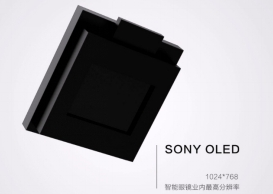
The official did not announce the specific model, only announced the resolution indicator is 1024 * 768 (readers please automatically ignore the slogan below), from the information published by Sony, the model selected should be ECX331A (because the model is released earlier, does not rule out The manufacturer has customized the improved version. Here, the author pays attention to the brightness index. The X-ray author has learned that the brightness of this module is about 200cd/m. 2;, the screen brightness of GALAXY S6 edge is about 550cd/m? 2;, based on this basis, the author believes that the brightness of the model display module used for AR is somewhat low. In order to improve the display effect of the virtual picture, the effect can be improved only by increasing the filter lens to block more external light. .
3. Optical components:
Looking at the optical structure from the propaganda map, I estimate that the principle of total reflection or refraction should be adopted to achieve near-sight imaging. This structure has a higher light utilization rate for the display module (compared to the semi-reflective method of Google glasses). Words, but the prism display scheme can't avoid the following two problems: the dispersion problem caused by the prism on the displayed virtual image, and the distortion of the real image due to refraction. I have not tried to wear it. I don't know how to optimize the manufacturer. I don't comment here. For another indicator FOV, the manufacturer claims to be three times as large as GoogleGlass, which means that it can achieve a viewing angle of about 36 degrees. This indicator has little difference from the perspective provided by HoloLens. According to the data published on the Internet, the approximate effect is as follows. It’s definitely not good to play games.
4, the input part:
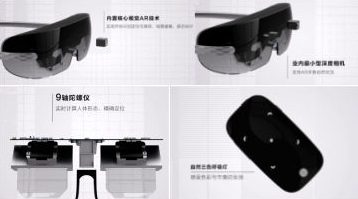
According to the information published in the announcement, the manufacturer has taken four sets of plans:
1. External touchpad;
2, 9-axis gyroscope sensor;
3, depth camera;
4. Visual AR technology.
First, the manufacturer is equipped with a "suspicious touchpad" device on the external device. The author speculates that the device is in the 2d mode at the system level. The AR is mainly used in the application mode, so the manufacturer provides the input of the touchpad according to the operating habits of the Android system. Equipment; 9-axis gyroscope should be used for real-time positioning of the head posture, as a compensation scheme for AR attitude tracking (AR attitude tracking will be elaborated in the software section); depth camera, core AR vision technology in the manufacturer's promotional film Introduced in hardware, the author understands that it should be a combination of software and hardware solutions, but unfortunately the manufacturer did not provide any technical details, the author speculates that this should be the manufacturer's technology upgrade interface, it should not be mature at present (estimated manufacturers I don't know for myself. It is not difficult to see from the following news photos or rely on the touchpad to operate the device.
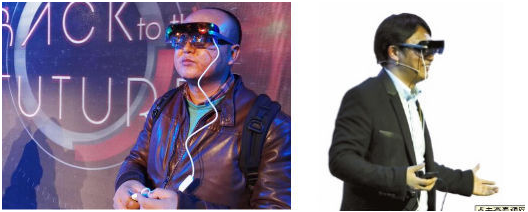
5, external filter
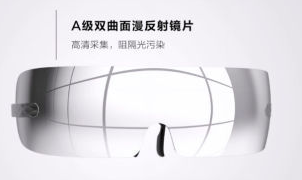
For the hyperbolic diffuse lens, I have been thinking for a long time and can't understand how to have a hyperboloid? What is the diffuse reflection? Let's think that the manufacturer is based on the modified advertising words that claim to be needed. In my opinion, the role of this lens is to reduce the external light transmittance and reduce the brightness difference between the display components to achieve the purpose of improving the visual experience.
5, temples

I have a lot of love in industrial design, let's play with each other! The author is puzzled here: This kind of brain concentrates all the components on the frame, how is the balance problem of the entire glasses solved? Manufacturers are too concentrated in space utilization, and the space of the temples is basically not utilized. In addition, as a prototype model, what is the technology, art and art?
AD8 standard floating Solar Cable is a kind of equipment used for floating photovoltaic power generation. It consists of photovoltaic cells that convert solar energy into electricity. The device is designed to float on the water, while it can be fixed to the water by a buoy and anchorage device to prevent drifting.
AD8 standard floating solar cable has the following characteristics:
1. Efficient use of solar energy: photovoltaic cells can convert solar energy into electricity to achieve efficient power generation.
2. Environmentally friendly: photovoltaic power generation does not produce pollutants and greenhouse gases and is environmentally friendly.
3. Save land resources: Floating solar cable can use the space on the water surface, saving the use of land resources.
4. Strong wind and wave resistance: floating solar cable adopts stable design, has strong wind and wave resistance, and can operate normally in bad weather conditions.
5. Easy installation and maintenance: Floating optical cables are relatively simple to install and maintain, and can be quickly deployed and adjusted.
AD8 standard floating solar cable is suitable for a variety of water environment, such as lakes, reservoirs, rivers, etc. It can be used in power stations, farmland irrigation, drinking water treatment and other fields to provide local clean energy and power supply.
AD8 Floating Solar Cable,Solar Adapter Cable,Waterproof Solar Cable,DC Cable
Suzhou Yonghao Cable Co.,Ltd. , https://www.yonghaocable.com